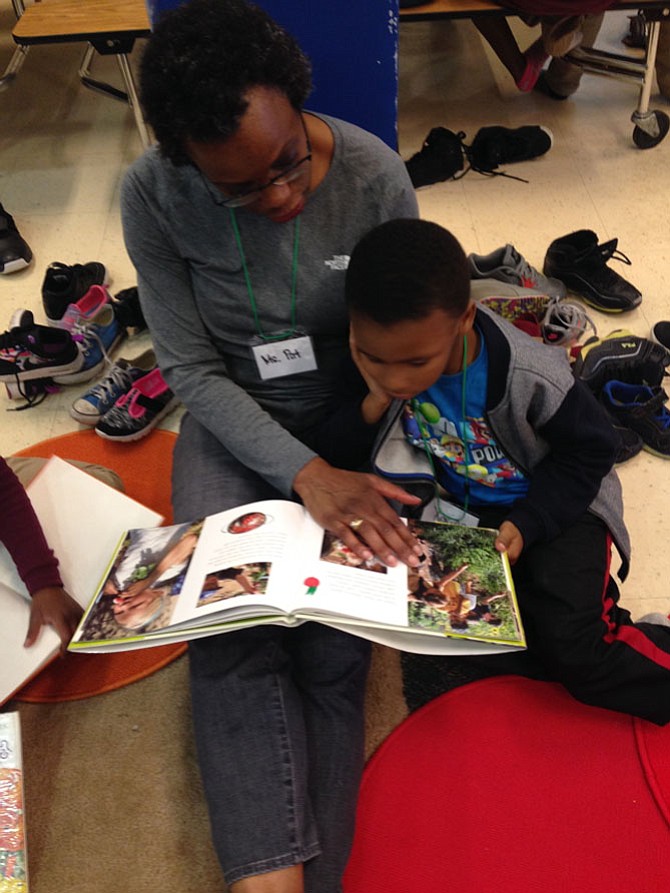Learning to read at ARHA. Children who find reading challenging by age 10 (that’s fourth grade) are four times more likely to drop out of high school, according to The Reading Connection. Photo courtesy of The Reading Connection
The story begins by reading aloud — 1,000 books before a child reaches Kindergarten.
It’s an initiative of The Reading Connection (TRC), a grassroots organization serving Alexandria, Arlington and elsewhere regionally since 1989.
Studies have shown that being read to as a child and having books in the home are the two most important indicators of future academic success.
Unfortunately, “kids in challenging situations aren’t exposed to books. They live in book deserts,” said Catherine Keightley, TRC executive director. Obviously, “if you move [or live in transition], you don’t have room for heavy books. That’s where we come in,” Keightley said.
TRC gives away 12,000 books to 1,500 children annually.
TRC’s mission, through Read-Aloud and other programming, aims to curb the cycle of poverty by providing early education and reading enrichment to children experiencing housing insecurity.
And it does so by making reading fun. For Sol Livingston, a family literacy TRC fellow brought on by a Boeing grant, reading becomes a whole experience.
“I read and sing with kids to make reading interesting,” said Livingston who leads partnered programs and parent workshops. “I let parents know it’s OK if kids don’t get through it all.”
The Read-Aloud format typically includes a large-group reading followed by breakouts of three to four per group, where children choose a book, or perhaps a theme, like bugs, to read about. Volunteers select books that would cover the theme. And during each Read-Aloud, children listen, share and engage in an activity that extends learning to a real life application.
Children created their own insects with Play-doh and pipe cleaners, Livingston recalled one Read-Aloud. The boys wanted to make spiders. And then they all made a snack – Ants on a Log, with celery and raisins. “Now the kids like raisins,” Livingston said.
To assist those most at risk of falling behind, TRC focuses on after-school times in shelters and community outlets, such as ALIVE! House, Carpenter’s Shelter, New Hope Housing, Alexandria Redevelopment Housing Authority (ARHA), Arlington Partnership for Affordable Housing and Healthy Families Fairfax.
“I don’t have enough words [to say about them],” said Gaynelle Diaz, director of the ARHA Ruby Tucker Family Center. “They provide the gold standard.” That means providing not only books for children to take home every week but also training and resources for parents and ARHA staff.
“It’s a well known fact that kids who love to read will read more,” said Livingston. And “the more they do, the better they will get.”
